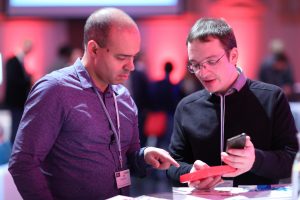Summary of achievements of the Action
Why ActInPak?
In previous projects and networks, we noticed a bottle neck in the development of active and intelligent packaging (AIP): a lot of research done but no real evidence of market penetration / implementation, while there seems to be so much added value of AIP. So that is exactly what we focused on since 2015: development of a knowledge-based network on sustainable, active and intelligent fibre-based packaging in order to overcome current technological, industrial, and social limitations that hinder the wide deployment of existing and newly developed solutions in market applications.
How did we approach the challenge?
Bridging the gap between science and industry to create an interdisciplinary knowledge-based network of scientists, industrialists and society, enabled us as a group to explore how to overcome hurdles on different levels: social, technological, economic, ecological and political. ActInPak was a platform for open communication with over 400 participants from 34 different countries, and 25% of the participants that come from industry (both large companies as well as SMEs from different parts of the value chain) or industry organisations. This platform was created by organising various meetings, workshops and conferences on different topics related to active and intelligent packaging. Both Invited Experts (from science as well as industry) and ActInPak participants presented their views to direct the network’s activities. By combining Action meetings with other (industrial) events we maximised the impact and visibility of our activities.

ActInPak focused specifically on bringing together research scientists and industry representatives to identify the barriers for market implementation and to provide solutions and direct scientific research. It revolved around getting to know each other and working together, and addressed the analysis of exemplary products, understanding of R&D and market needs, and dissemination and awareness creation. An inventory was set up to identify issues, opportunities and market demands to be able, in a later stage of the Action, to direct future innovations and contribute to existing development efforts into scientific and technical research into fibre-based materials. During its lifetime, the Action targeted networking and training, market introduction and understanding, and dissemination through all its activities.
What were our challenges?
Gap research <> industry
- Lack of awareness of what is AIP
- Lack of awareness of current infrastructures and requirements
- Match demands with current technologies
- Lack of awareness of benefits, added value and impact; not only for consumer, also throughout value chain
- Cooperation between stakeholders
- Industry seems to prefer fleshed out technologies, whereas science delivers partial solutions
- Challenges differ per packaging type (eg bulk vs unit)
- Who is key decision maker or Stakeholder that benefits most?
- Prove advantages outweigh the costs
- Conflicting interests throughout value chain >> find common ground
Gap industry <> consumers
- Active packaging is “invisible”
- Lack of awareness of what is AIP, reach out on different levels
- More action needed on traceability of unsafe food + informing public when unsafe products are found on the market
- We are all consumers: if you will never buy it, forget it
What did we deliver?
In total, 6 dedicated WG workshops, 4 seminars/conferences, 5 MC meetings, 3 dissemination meetings, 3 Training Schools, and 36 STSMs took place during ActInPak’s lifetime (2015-2019).
This resulted in the following:

- Final overall roadmap for the consolidated insights on market implementation of AIP, backed up by the Working Group specific roadmaps on technology, socio-economy, and sustainability
- Infographics on impact of AIP on food waste, food safety, and environment
- An animated video to explain AIP to society
- Industry leaflets explaining Active Packaging, Intelligent Packaging, Sustainability, and Legislation
- Educational tools, such as the starter pack
- Several published papers and other publications
- Proceedings and insights from workshops, conferences and other meetings, such as Take Home Messages, Book of Abstracts, presentations (are minutes of the MC meetings online or should they be??)
- Ambassador activities such as a video about our action or our meetings, lectures at schools and universities, and videos and statements on STSMs
All these deliverables are also disseminated via the DiscoverActInPak cards.

What happens next?
ActInPak network will be sustained via different ways:
- TheInternational Association of Packaging Research Institutes (iapri) has a special working group on active and intelligent packaging for researchers. More information via https://www.iapri.org/working_groups.php
- LinkedIn group will remain
- Via Google Scholar, researchers working on the topic of AIP can be identified via ‘actinpak’ in either their profile or their publications
- The website actinpak.eu will remain active

